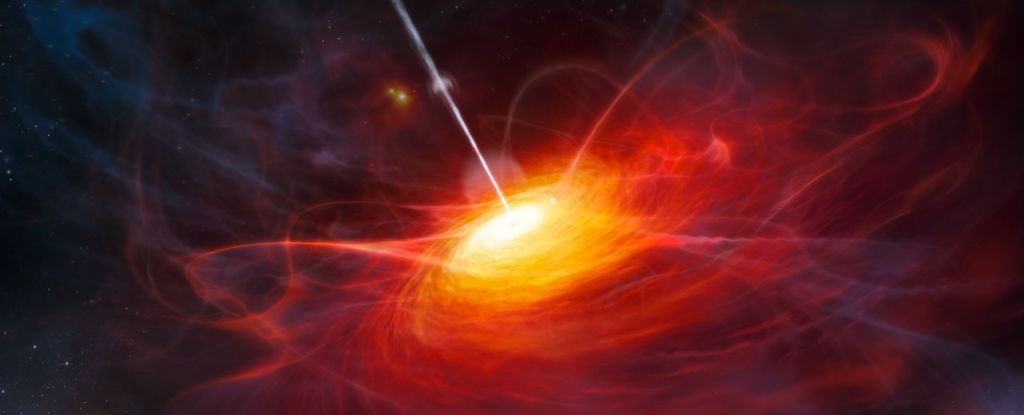A discovered black hole lurking in the Cosmic Dawn is too big to be easily explained. Sitting at the center of a galaxy called J1120 + 0641, it tips the scales at the mass of a billion Suns.
Supermassive black holes exist all around us today. The problem is when of the existence of J1120+0641. At less than 770 million years after the Big Bang, it is hard to understand how the black hole had time to gain so much mass.
We’ve known about the galaxy and its supermassive black hole for more than a decade, and scientists had ideas about how it was born. Now, observations using JWST have dispelled one of those notions. By all measures, J1120+0641 looks “shockingly normal,” leaving open more exotic explanations for the black hole’s accretion.
The discovery of J1120+0641 was announced in 2011 and for several years it remained the most distant known quasar galaxy. It was a good few years, actually. As far as we knew, J1120+0641 was an outlier, with a possible explanation for its size still on the table.
Quasar galaxies are galaxies that have a central supermassive black hole that is accreting at an incredible speed. They are surrounded by a huge cloud of gas and dust, which they throw down as fast as they can. Friction and gravity around the black hole heat the material, making it glow brightly.
But the speed at which a black hole can feed is not infinite. The maximum sustainable speed is determined by its Eddington limit, beyond which the hot material glows so much that the radiation pressure would overcome the gravitational pull, pushing the material away and leaving nothing for the black hole to feed on.
Now, black holes can briefly enter super-Eddington accretion, where they cross this limit and absorb as much material as they can before the radiation pressure kicks in. This is one possible explanation for the black hole at the center of J1120+ 0641 and, as we find more and more, other massive black holes lurking in the early Universe.
To look for signs of super-Eddington accretion, astronomers needed data of sufficient resolution to perform a detailed analysis of the galaxy’s light, looking for signatures associated with extreme processes. And for that, we needed JWST, the most powerful space telescope ever built, optimized for peering into those far reaches of space and time.
JWST observed the galaxy in early 2023, and a team led by astronomer Sarah Bosman of the Max Planck Institute for Astronomy in Germany teased the light it collected to catalog the properties of the material around the black hole: a large dust torus on the periphery and a glowing disk that spins and enters the black hole.
This analysis reveals that the black hole is actually feeding quite normally – there is nothing about its accretion that looks significantly different from other recent quasar galaxies.
One possible explanation for these giant black holes is that the extra dust was causing astronomers to overestimate their masses. And yet there is no sign of additional dust.
This means that J1120+0641 is what it appears to be: a fairly normal quasar galaxy, with a black hole that isn’t eating away material at a super-high speed. The black hole and how it feeds was already relatively mature by the time we observed it, within a few hundred million years of the Big Bang.
“Overall, the new observations only add to the mystery: the early quasars were remarkably normal,” says Bosman. “Regardless of which wavelengths we observe them at, quasars are nearly identical across all epochs of the Universe.”
This means that super-Eddington accretion is not the answer to the growth of supermassive black holes at the dawn of time.
The other main explanation is that black holes are initially formed from rather large ‘seeds’. Rather than a slow, gradual process from something the size of a star, this theory suggests that black holes formed from the collapse of clumps of matter or even extremely massive stars up to hundreds of thousands of times the mass of the Sun, giving growth a first start.
As we find more and more of these giants hidden in the mists of the early Universe, this notion seems less outlandish and more like the best possible explanation we have for this mysterious era in our Universe’s history.
The research was published in Astronomy of Nature.
